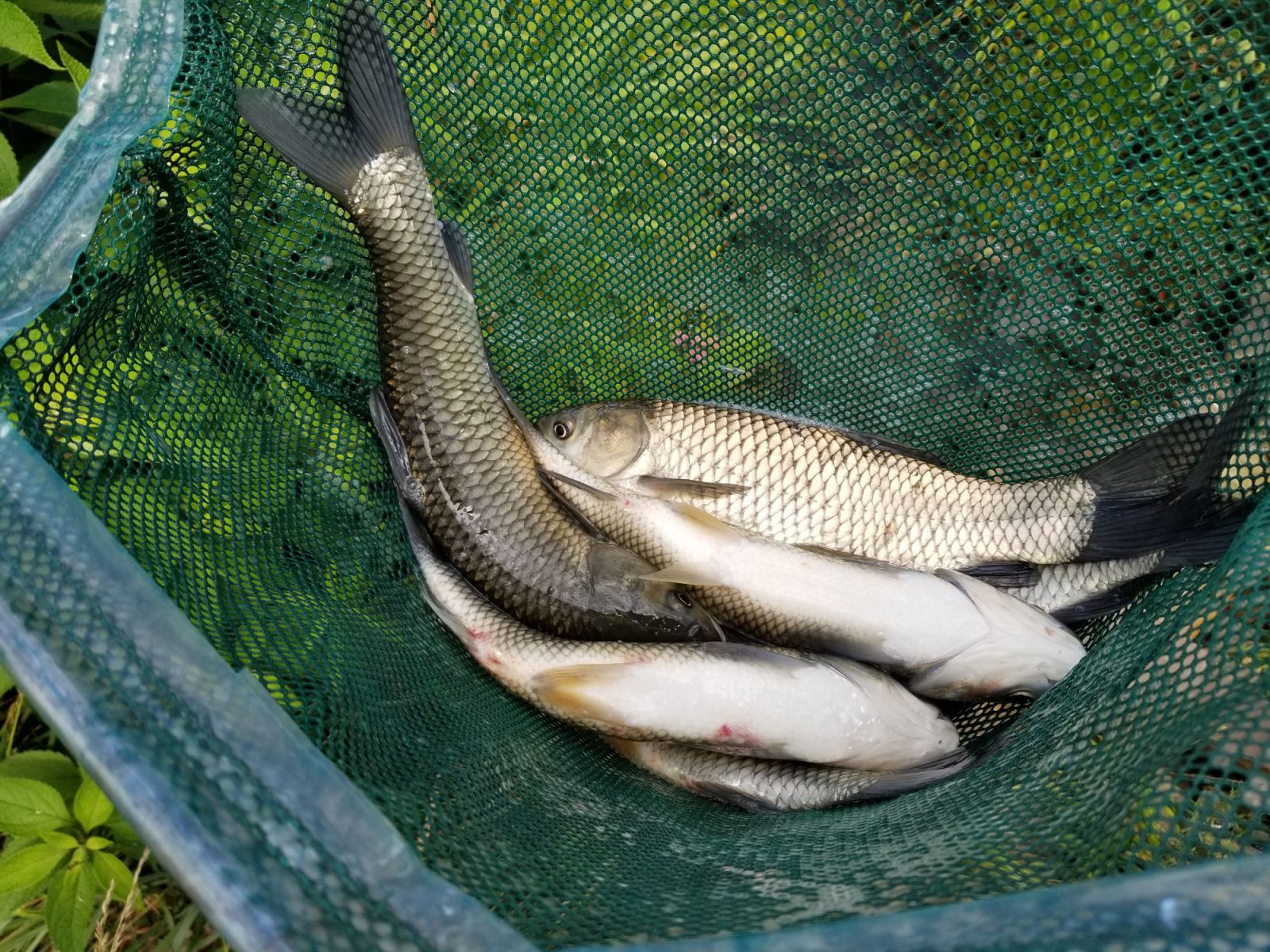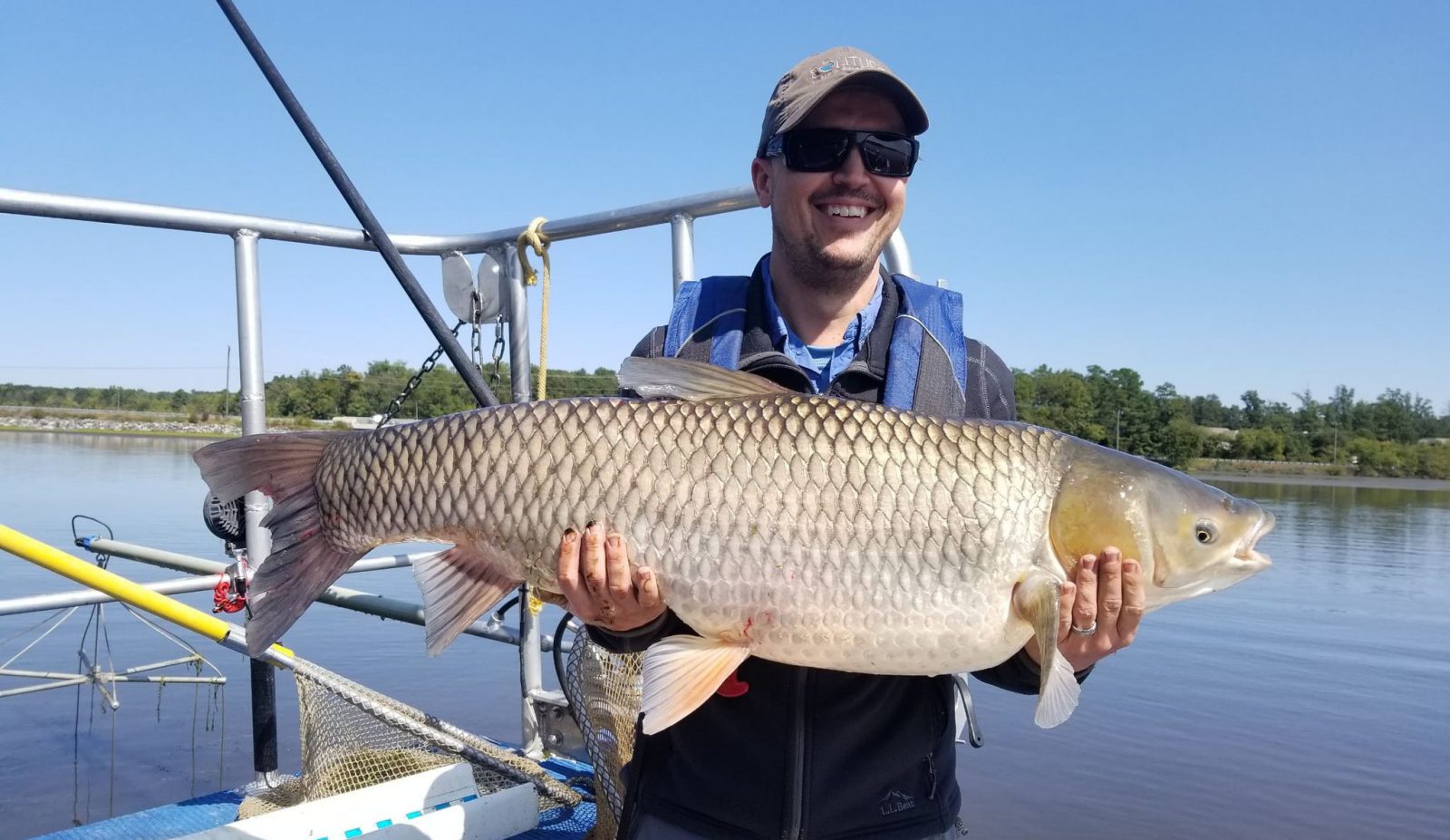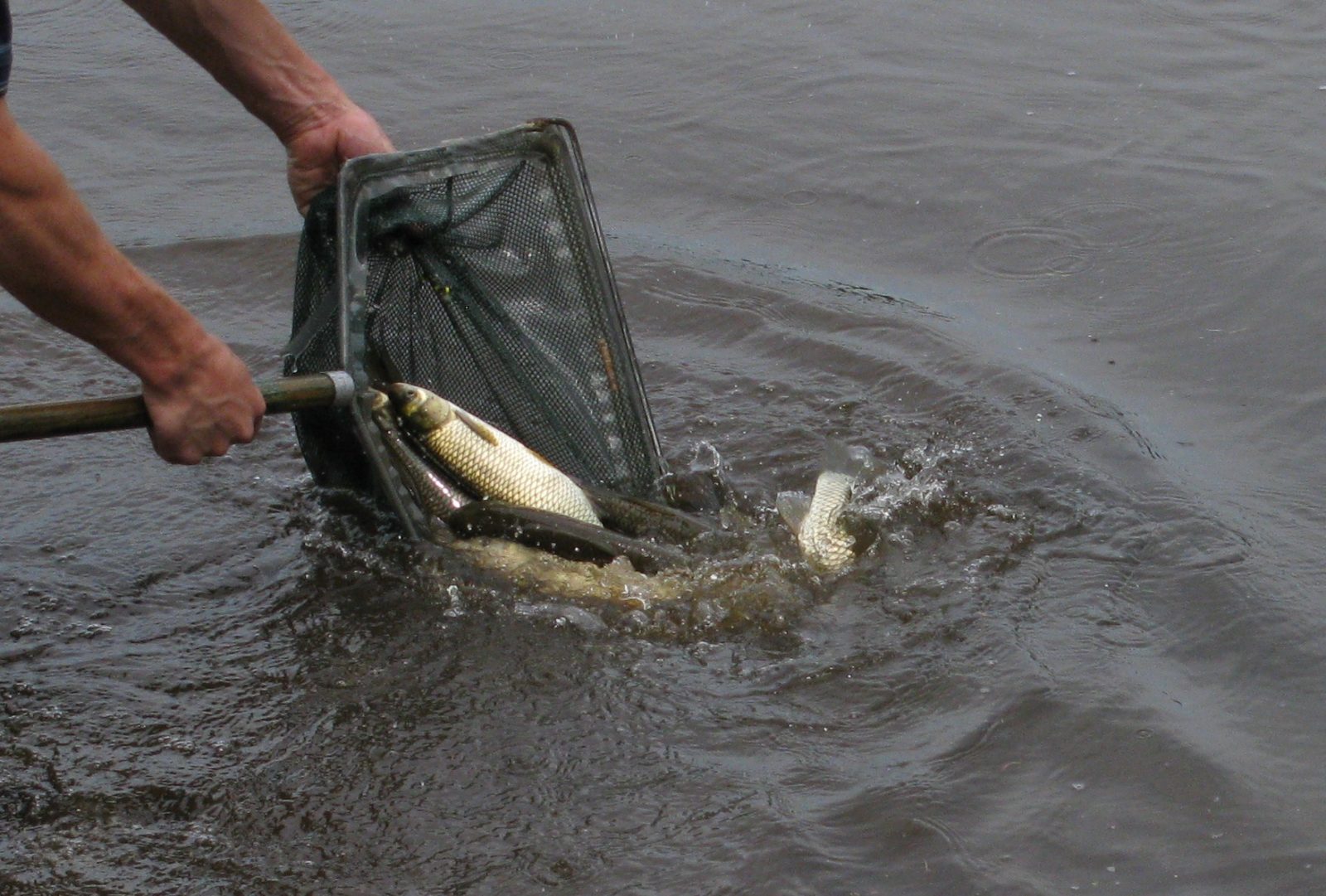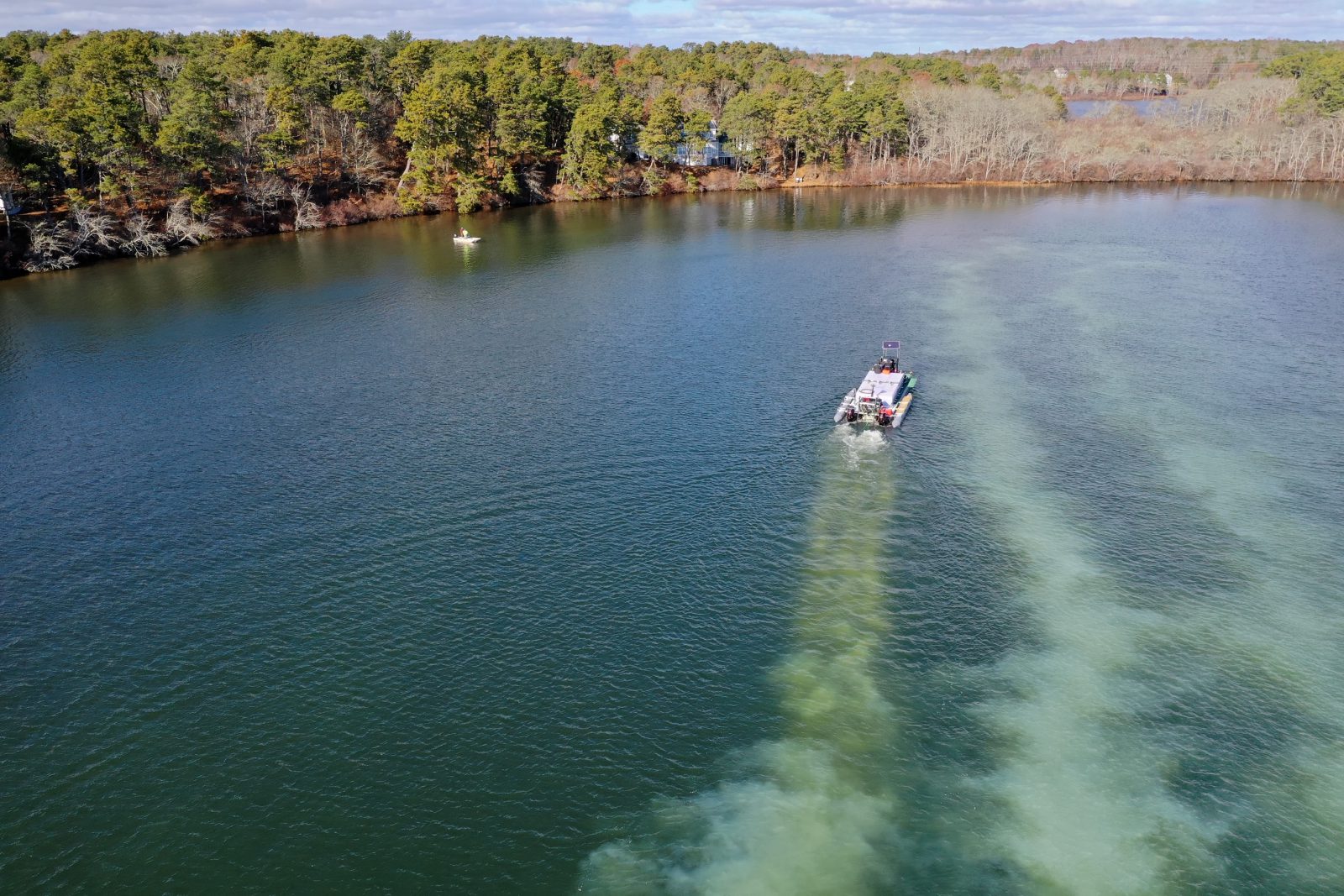
Unintended Consequences of Stocking Grass Carp
AS SEEN IN POND BOSS MAGAZINE
Nearly five decades ago, triploid grass carp were introduced in the United States to control undesired aquatic vegetation. In many instances, they have done a great job meeting manager objectives and stakeholder goals. However, at times they disrupt the ecosystem, initiating a chain of events that can adversely impact the waterbody and result in chronic cyanobacteria (also known as Harmful Algal Blooms or blue-green algae) issues, reduced water clarity, and the collapse of the existing fishery.
The larger the lake, the more challenging these unintended problems can be to resolve – both in magnitude and in cost. Depending on the waterbody, it can take years for the ecosystem to cycle through a natural progression before it begins to resemble its former self, prior to the introduction of the Grass Carp.
When these management failures occur, the opportunity costs to those living on the lake can be significant. In most cases, these failures are a result of poor decision-making, which typically derives from a lack of knowledge and experience, or from trying to save money without an understanding of the long-term impacts of the decisions made. Cause and effect.
Treating dense vegetation growth on a 500-acre lake with herbicides could cost $50,000-$100,000 or more, and the control may be short-lived. Meanwhile, spending $21,000 on Grass Carp one-time could control the vegetation for a period of 5-15 years depending on escapement and predation. Looking at those numbers, it starts becoming clear why grass carp are stocked. Although stocking may be the correct approach, additional management measures may be required. In some cases, these additional measures are expensive, although if done properly can lead to a better, more sustainable outcome for the waterbody.
Throughout the process of properly utilizing Grass Carp, it is important to understand they have a long-term impact on the waterbody’s habitat, and this disruption has far-reaching effects on the entire aquatic ecosystem. That’s why it is so important to understand and consider all the interconnected variables within the ecosystem that will be impacted prior to stocking these purposeful fish—aquatic vegetation species, water quality, water clarity, phytoplankton, zooplankton, invertebrates, fish, and waterfowl, to name a few.
Grass carp tend to either control very little of the vegetation within their dietary preference, or they control all of it. They are not a good tool if you are expecting long-term partial control of submersed aquatic vegetation. When grass carp have a dense enough population, they keep vegetation from going to seed and reduce the amount of energy plants send to their roots. This leads to a decline in both current vegetation biomass, as well as a reduction in the potential for future vegetation growth. Even though the grass carp population will decrease annually due to natural mortality, vegetation typically becomes suppressed at a faster rate until it is eradicated from the ecosystem.
Challenges of Stocking Grass Carp
As with most things with Mother Nature, there are some exceptions to this. In areas where water is shallow and the growing season is nearly year-round, Grass Carp can have a more difficult time achieving control, requiring a larger population of carp to achieve the same long-term effects.
When using grass carp as the sole means of vegetation control, it is wise to plan on them consuming all vegetation species within their diet, and those species will be under control for 10 or more years if carp do not escape or succumb to predation. This long duration of control can be a positive attribute but requires proper planning.
The most common unintended consequence of stocking Grass Carp are Harmful Algal Blooms (HABs) becoming prevalent as vegetation is eradicated. This undesired growth is fueled by phosphorus and nitrogen, which are no longer being used by aquatic vegetation, and are reintroduced after they pass through the digestive system of the fish. This issue typically lasts many years, as grass carp continually consume any vegetation attempting to re-establish.
Similar to HAB’s, a decrease in water clarity is another common unintended consequence. This loss in clarity is usually a result of increased planktonic algae species, but in rare cases it can be caused by suspended sediment. A loss in water clarity is not always caused by bad algae species; in some cases, beneficial green algae and zooplankton species thrive. Although this can be great for the fishery, it can be highly undesired by stakeholders.
A third unintended consequence is the forage base can become depleted due to both the lack of cover (i.e., protection from vegetation) as well as loss of their food source in the form of periphyton and aquatic insects that live on or within aquatic vegetation. As the forage base collapses, predator fish growth slows, and predators become stunted. This leads to lower angler satisfaction.
A fourth unintended consequence is when midge populations increase and become problematic. Elevated midge populations have a tendency to pester people, gravitate to lights at night, as well as cover the sides of houses and buildings. This increase in midge populations can occur when the forage base collapses, providing insects and insect larvae with higher odds of survival.
As you can see, this can be a chain of events that actually started as a good decision. Avoiding these unintended consequences requires proper knowledge and foresight into how the waterbody may change once the carp successfully control submerged aquatic vegetation.
Prevent Excess Nutrient Levels
A few key data points to firmly understand during the process of drafting a Grass Carp Management Plan include phosphorus and nitrogen levels, water clarity, water depth, species of vegetation present, as well as total surface acres of vegetation, species of fish present, the health of the existing fish community, and types and amount of non-vegetative fish cover.
As mentioned, HABs and diminished water clarity due to phytoplankton are both caused by nutrients redirected from plant growth into algae growth as the grass carp eradicate vegetation.
The potential for algae growth, as well as the biomass of growth that occurs, will depend on multiple variables, but primarily the availability of phosphorus and nitrogen. Waterbodies with lower nutrient levels (oligotrophic or mesotrophic) are less likely to experience undesired plankton growth compared to waterbodies that have higher nutrient levels (eutrophic or hypereutrophic).
When testing water quality, total phosphorus is the most important variable to investigate. Keep in mind that testing water for total phosphorus does not account for phosphorus bound within existing aquatic vegetation. As such, water quality data is subject to misinterpretation if not considering this variable.
Sediment phosphorus levels should also be tested, as they provide critical insight into the lake’s internal nutrient load. In general, waterbodies with elevated phosphorus in the sediment should anticipate an increase in cyanobacteria and phytoplankton growth once aquatic vegetation is eradicated.
To prevent available phosphorus from fueling undesired growth, it needs to shift into a less available form. This can be done using a combination of methods, including promoting vegetation species that grass carp do not eat, maintaining sufficient dissolved oxygen at the sediment-water interface, and using products that bind phosphorus, such as alum, Phoslock and EutroSORB.
Grass Carp: Are they right for your water?
Regardless if stakeholders are seeking to maintain clean healthy water for boating and swimming, or if they desire a thriving fishery, one of the best management strategies to consider is establishing a tolerance for vegetation species that grass carp won’t eat.
Grass carp have dietary preferences that allow some aquatic plants to coexist in harmony. There are a variety of plant species they dislike, including most emergent vegetation species. There are quite a few species they literally can’t eat because their soft fleshy lips won’t bite through thick stems and heavy leaves. White water lilies, spatterdock, pickerelweed, duck potato, and water willow are a few of the common plants to consider. Establishing them prior to stocking grass carp is a solid approach. Waiting until after submerged vegetation has been eradicated is significantly more difficult and requires the use of fence material to create exclosures to protect plants. In addition to the grass carp, wildlife such as turtles, crayfish, waterfowl, muskrats, and deer feed on vegetation and seek out and eradicate juvenile plants that are installed, even if they are outside of their preferred diet.
Although grass carp can get a bad reputation at times, they are an outstanding management tool when used properly. Their ability to provide long-term control over a variety of vegetation species can play a significant role in stretching budgets and maximizing a waterbody’s potential to meet stakeholder goals. With the correct data and foresight, management strategies can be implemented with a high probability of sustained success, allowing time and energy to be focused on enjoying the lake.
SOLitude Lake Management is a nationwide environmental firm committed to providing sustainable solutions that improve water quality, enhance beauty and preserve natural resources.
SOLitude’s team of aquatic scientists specializes in the development and execution of customized lake, stormwater pond, wetland and fisheries management programs. Services include water quality testing and restoration, algae and aquatic weed control, installation and maintenance of fountains and aeration systems, shoreline erosion control, muck and sediment removal and invasive species management. SOLitude partners with homeowners associations, golf courses, private landowners, businesses and municipalities. SOLitude Lake Management is part of Rentokil, a leading business services company, operating across the United States, Canada and Puerto Rico.
For more information, visit SOLitude Lake Management at solitudelakemanagement.com, and connect on Facebook, LinkedIn and Twitter.

















